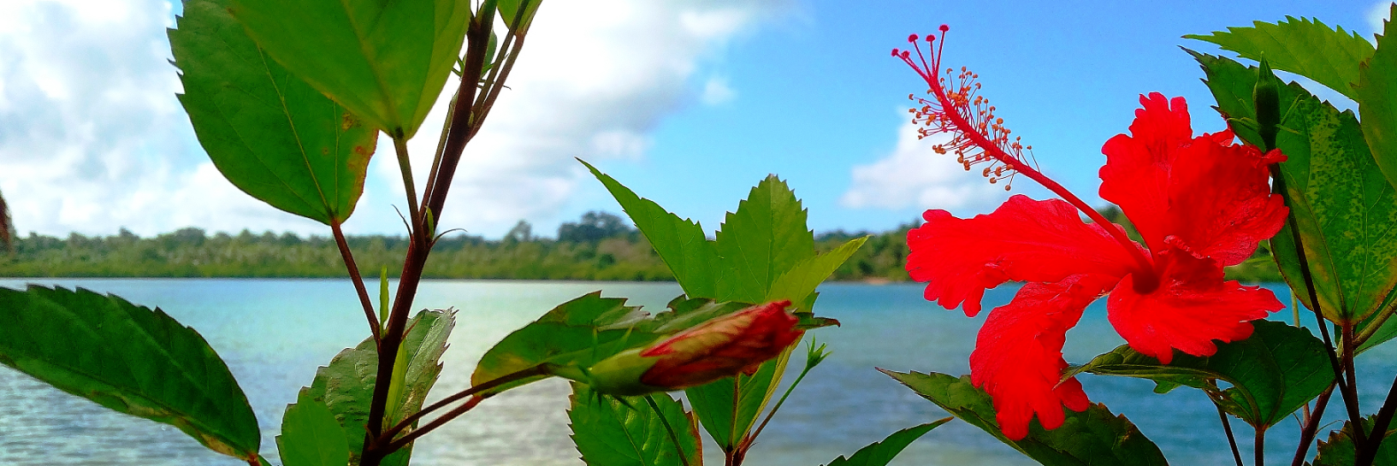
vanuatu
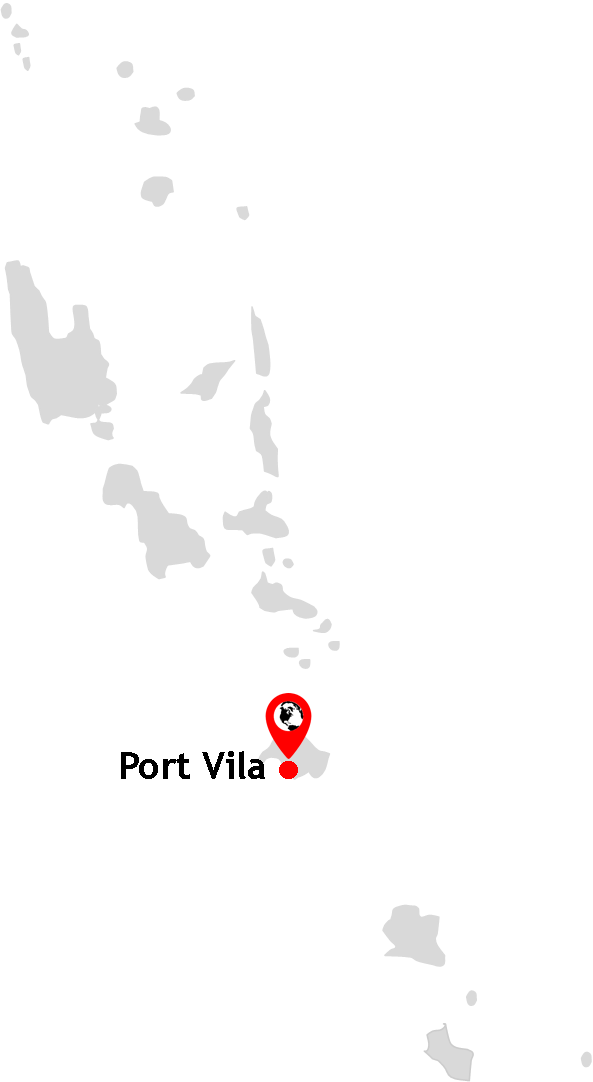
Where: Port Vila and locations across Efate. Vanuatu, Oceania
When: April 2019
What: Snorkelling, posting a postcard in the world's only underwater post office in Hideaway Island, Port Vila Market life, Erakor Lagoon, Swimming in Mele Cascades, Siviri Village, road tripping around Efate, hibiscus flowers, Port Havannah, Mele rainforest walk, coral beaches.
How: Minivan buses, transfers, international flights, taxi, boat.
Wildlife spotting: Giant African snail, marine life underwater, hermit crabs, giant Orb Weaving spider, sea cucumbers.
Country counter: No.86
Illnesses or mishaps: Multiple mosquito bites; Standing on a sea urchin whilst snorkelling and having to dig four spines out of my left foot and apply iodine; Coming face to face with a giant orb weaving spider having ploughed faceward into its web.
The island nations of Melanesia are what most would consider paradise whenever they mentally whisk themselves off momentarily from the daily grind. I hesitate to use travel writing clichés of the "picture postcard" and "island paradise" kind but there is a reason why these have become the go-to phrases to describe Vanuatu. It would be wrong, however, to dismiss Vanuatu as just another clichéd paradise destination because there's far more to this island nation in the South Pacific than palm trees, blue waters, warm weather and people wearing even warmer smiles. Vanuatu is a country with an interesting and gruesome past. Once labelled part of the "Cannibal Isles" by Captain Cook, the last recorded act of cannibalism in Vanuatu was as late at 1969. If the name Vanuatu doesn't resonate particularly strongly it may be because it only dates back to 1980 when the islands, then known as the New Hebrides, gained their independence from a power-sharing France and United Kingdom. As always, colonialism has firmly left its linguistic imprint on Vanuatu and today manifests itself most strongly in the country's trilingual use of English, French and something called Bislama - a kind of Creole. Language helps any traveller to orient themselves quickly, acting as a touchstone to understanding the culture which created it. On many an occasion Bislama's phonetically spelt words on signage ("rod sefti" for "road safety", "tok" for "talk", "stoa" for "store", "yut senta" for "youth centre") had me trying out my Bislama pronunciation - much to the annoyance of those around me. Unfortunately many may more readily associate Vanuatu with the devastation wrought by Cyclone Pam in 2015 than with paradise. Ni-Vanuatus, or ni-Vans for short, are nothing if not resilient.
Vanuatu lies tantalisingly close to Australia's Eastern coast, a mere three hours flight north eastward from Sydney on Air Vanuatu. With most countries frustratingly long haul from Australia's shores, travelling to Vanuatu made a refreshing change; from corporate city of glass to paradise with palm trees and a warm welcome in just a few hours. Vanuatu is a diverse destination but, because this country is comprised of scores of islands, getting to most of the incredible things you'd want to see, like the active volcano on Tanna Island and the truly iconic land divers on Pentecost Island, is time consuming and very expensive. I really didn't want my time in Vanuatu to be defined by gallivanting; dashing to X (insert destination here), getting up early to be able to make Y (insert mode of transport here) and stressing about remembering to do Z (insert thing you must remember otherwise your entire itinerary is kaput). Sometimes in travel you spend so much time and energy trying to get to the next place that you have little left to appreciate the current one. We therefore opted to remain on the main island of Efate and savour what it had to offer. The temptation is present in every traveller to be overly ambitious and stuff the itinerary full until it's bursting at the seams but I managed to resist this almost intuitive urge to see incredible things and instead opted to stay on just one of Vanuatu's 83 islands. I would soak up the view of Erakor Lagoon where I'd be awoken, some mornings, to local kids splashing naked in its brown waters. Perhaps I'd finally get to finish that book or even listen to a few podcasts? Despite this vow to myself to take it easy on this trip, our days soon filled up with mini adventures around Efate made possible by the city's user-friendly bus system and a hire car.
Our first foray out into the ni-Vanuatu capital kicked off with an immersive meander through Port Vila's colourful indoor market - a place crammed full of unusual-looking tropical fruits, the widest selection of bananas I've ever seen and palm leaf baskets containing the most important thing in Melanesian culture: the mind-altering kava. A wander around the stalls of this place, trying hard not to trip over the baskets of produce lined lovingly but dangerously along the aisles, was a scintillating and authentic experience and as typical a South Pacific scene as you will ever find. It was a chance to taste first hand the Melanesian culture at the heart of Vanuatu through both its produce but also through the faces of its people - including some of the cutest kids I've ever seen.
You'll soon notice, as I did, that smiles are given willingly on Efate, from both children and adults alike. It was not unusual for women in particular, many sporting impressive afros, to greet us as they passed, often wearing brightly-coloured dresses and more often than not with multiple kids in tow. It's not too frequently these days that you can travel to a country where the locals are completely unphased by visitors. The welcoming and hospitable spirit of those living in the South Pacific has been written about and espoused by travel writers and bloggers so many times that it has entered into travel cliché. I'm glad to report, however, that this isn't merely writer hyperbole. It's heart-warming to simply be greeted for being a human being rather than being greeted as a cynical prelude to being sold something. The welcome on Vanuatu is just that - a simple and pure welcome.
Flagging down one of the long buses is a really cool way to get about the island. We headed to the Mele part of Efate to do what was, without doubt, the most touristy thing possible: posting a waterproof postcard in the underwater post office which lies twenty metres just off the coral beach of Hideaway Island - a fun little expedition made possible with the help of a return boat crossing, a GoPro underwater camera and some hired snorkel gear. Unsurprisingly this post office is the only one of its kind in the world. Unfortunately, just as in Fiji, I didn't make it off a South Pacific beach without injury. This time it was a brief encounter with a sea urchin, resulting in my spending part of that evening digging out four spines from my foot and dabbing iodine on the holes they'd left behind (unlike in Fiji we'd remembered to bring the iodine with us this time). A return to Mele the following day saw us trudging through an impressive expanse of rainforest to swim in the tepid waters of the majestic Mele Cascades. Torrential rains overnight had guaranteed us an impressive water show. I've seen many waterfalls on my travels, particularly bushwalking in Australia, but Mele Cascades was incredible - so much so that I was glad I'd packed my budgie smugglers and was thus free and able to splash around in one of its many deep pools, choosing one which had an awesome vertical view straight up to the water plummeting over the cliff's edge. In hindsight it probably wasn't the best move on the part of a person who had, only the night before, removed sea urchin spines from his foot. Unsurprisingly scrambling barefoot over slime-covered rocks and swimming in water containing who-knows-what activated my foot's soreness anew. However, there was quite simply no chance of me watching the thundering waters passively from the side-lines. I had only one chance to be able to say that I'd bathed in the cascades of a ni-Vanuatu waterfall in the middle of the South Pacific - and I took it.
For the second time in as many days we rounded off our day with a stop at Rossi's, a humble café-cum-restaurant overlooking Port Vila's functional but pleasant harbour. The service was always good and the food hearty and nutritious enough to keep two travellers fuelled up to travel some more. It was all washed down with an obligatory cup of the local Tanna coffee and, strangely, a can of orange Fanta (for some reason this choice of soft drink seemed fitting for the location). We would return to Rossi's a third and final time the following day when, as if bestowing a parting gift, Port Vila's harbour was to put on a glorious sunset display for us as if to thank us for visiting. It was a fitting and satisfying end to our trip to a country where smiles, hellos and waves were part of the daily embrace by locals, an outstretched hand of friendship to two unknowns visiting their little-known country.
After three days relying on the minibus buses to get us around Efate we decided, for our final day, to hire a car. On several occasions previously I had seen things I'd wanted to photograph or get a closer look at but was unable to get out of the bus as it zoomed by. As any traveller knows this is deeply frustrating. Our hire car took us along Efate's potholed-ridden roads, as far north as Undine Bay and as far south west as Tamanu. We were free to pull over at any point and, outside of the capital, we had the road (yes, there was only one for most of the journey) to ourselves. The journey north from Port Vila was dotted with signs of local ni-Van life; little roadside stalls selling organically-grown produce, wooden shacks and even a small local church which, being Easter Sunday, was packed full of ni-Vans whom I could hear were enthusiastically chanting the Lord's Prayer from under its roof made of palm leaves. A stop off at the exclusive Port Havannah resort for coffee came complete with an unforgettable vista of clear turquoise waters through which luminous fish and the thriving corals attracting them could be seen. It was even possible to make out several sea cucumbers which had seemingly taken to huddling together close to the shoreline. On its horizon was the looming purple island of Moso. It was a paradisal setting unsurpassed by anything I have seen before.
We pressed on further north around Efate's ring road (I know the words "ring road" conjure up images of industrial city highways but this couldn't be further from the reality on Efate) and took a detour down towards the coast at Siviri Village where a desolate sandy-coloured coral beach punctuated by a single fallen coconut foregrounded the evocative purple peaks of Nguna, Pele and Moso islands. It was a photographer's dream. In my hot-headed excitement to get down to the beach I'd walked under two low-lying trees and, unfortunately for me and it, had ploughed head-first into a giant orb weaving spider's web. It is possibly the biggest spider I have ever seen - and I live in Australia! Flinching and rubbing myself all over to get rid of the psychosomatic itchiness I felt, I realised it was a cautionary reminder to be careful in unknown places and to watch where I am going - for sometimes danger lurks close to beauty. Recovering my composure and feeling a little stupid, we hopped back into the car and headed further up the coast, soon finding ourselves asking the permission of a homestead owner ("private property") if he would allow us onto his land so that we could walk along the stretch of beach he was lucky enough to call his own. Granting our wish, and followed by his friendly but a-little-bit-scary guard dogs, we stepped foot on to a pristine white coral beach. The grey sky bubbling with white bulbous clouds could, normally, be expected to compromise a vista such as this but, in true Pacific Island magic, somehow served to augment it. A solitary white shell sat there patiently waiting to be photographed as small white crabs scurried horizontally at the sight and sound of our footsteps. The island peaks of Emao, Pele and Nguna added an intense purple moodiness to a stunning horizon.
...Of course, to sit and read a book in a country like Vanuatu is a crying shame and an opportunity wasted. You'll be unsurprised to hear that, having read above what we did during our time on Efate, I didn't get to finish that book in the end. And I'm rather glad about that. Vanuatu was my 86th country.

A cloudy sunset across the Erakor Lagoon. I wasn't to know it at the time but these bulbous clouds were the precursor to an absolute deluge overnight.
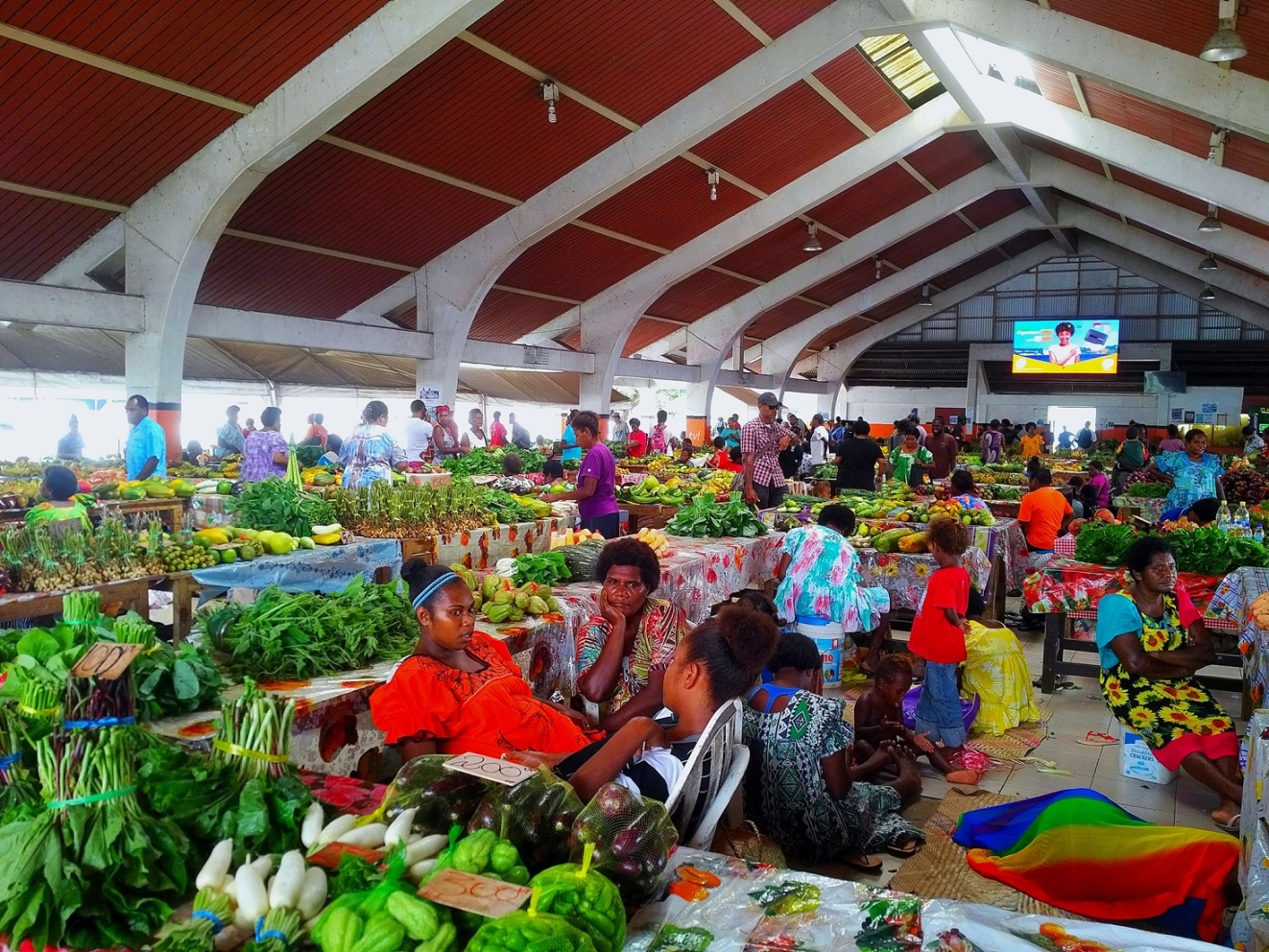
The marvellously colourful Port Vila market crammed with kava, bananas of all varieties and unidentifiable tropical fruits.

Our bungalow had cooking facilities so we seized the opportunity to cook for ourselves hence our visit to a local supermarket. I thought this might go some way towards helping to keep the cost of the trip down. It didn't. Prices are just as high in supermarkets too!
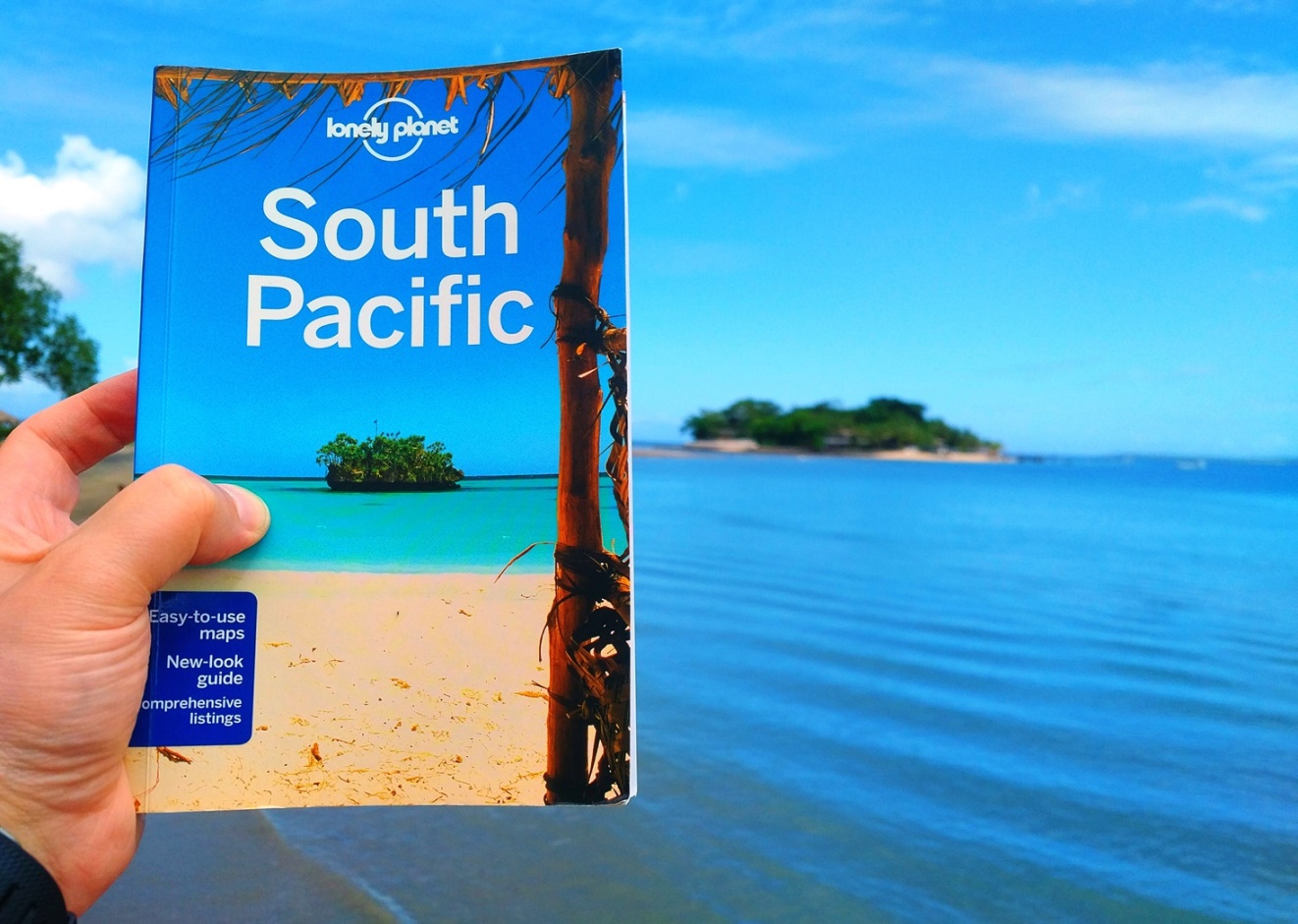
My Lonely Planet guide to the South Pacific in-situ.
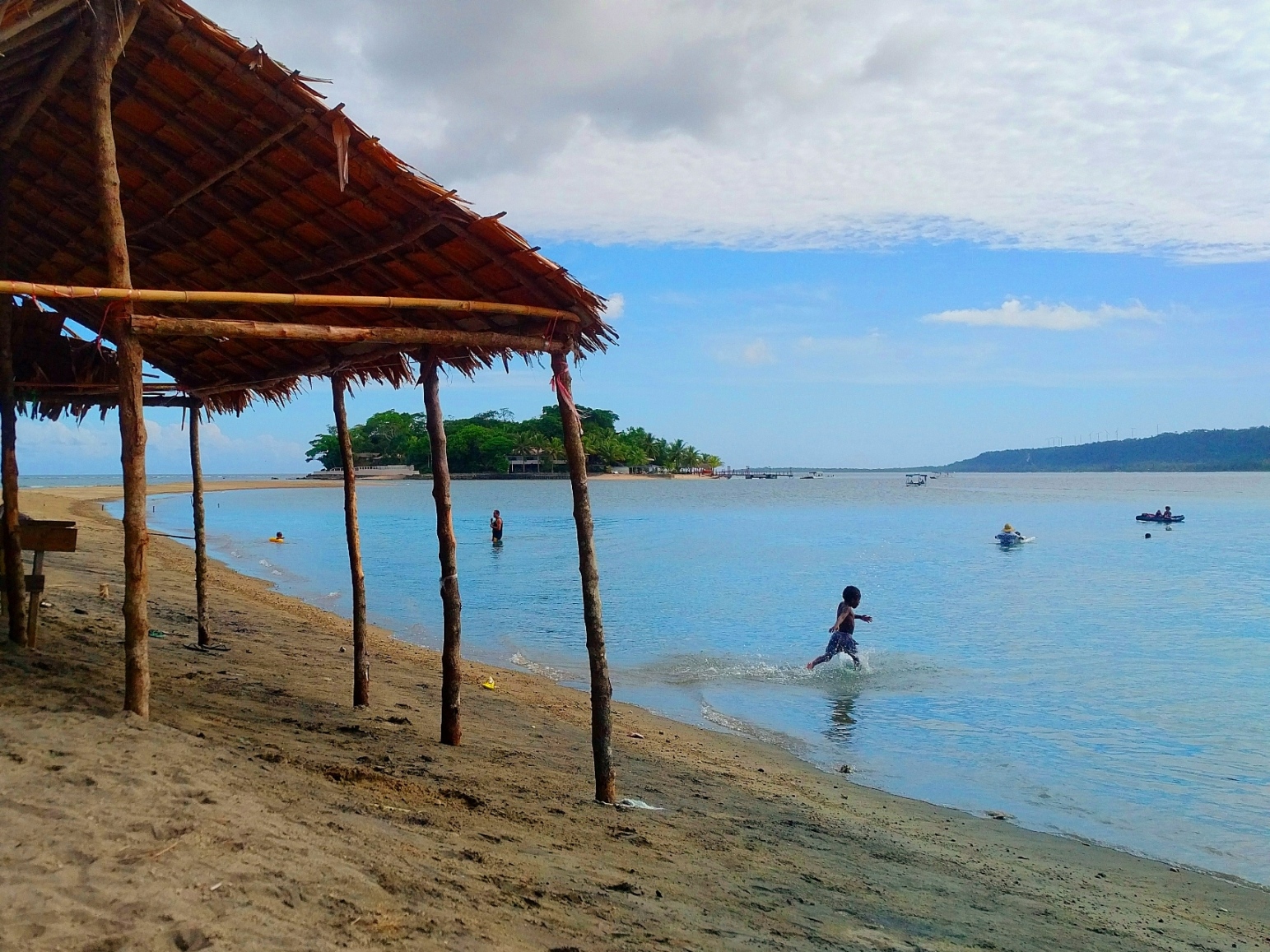
A scene of local Ni-Vanuatu life on our return trip from Hideaway Island. Local kids play in the water because it's Good Friday and presumably a day off for all. Clouds so typical of this part of the world battle for supremacy with the deep blue of the sky - a battle which seems never ending and constantly subject to change. The scene is foregrounded by a traditional shack made of palm leaves.
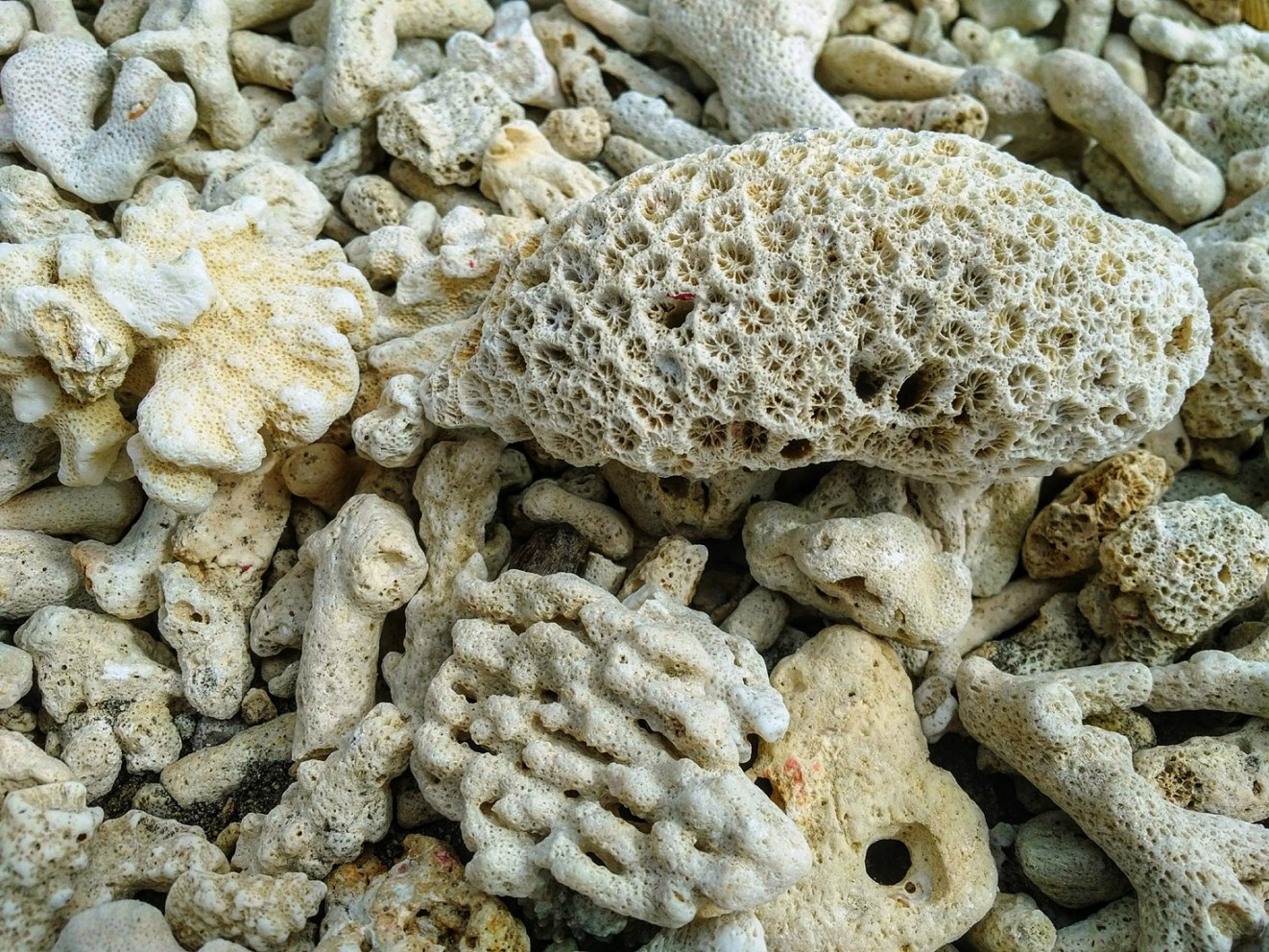
The coral beach on Hideaway Island is beautiful to behold - but nightmare to walk on.
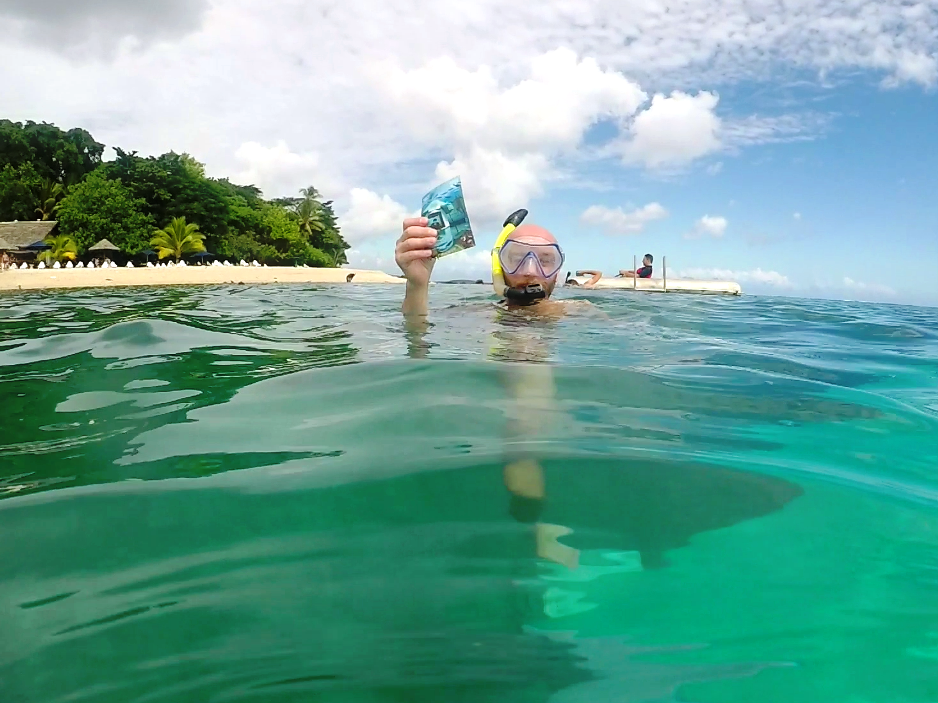
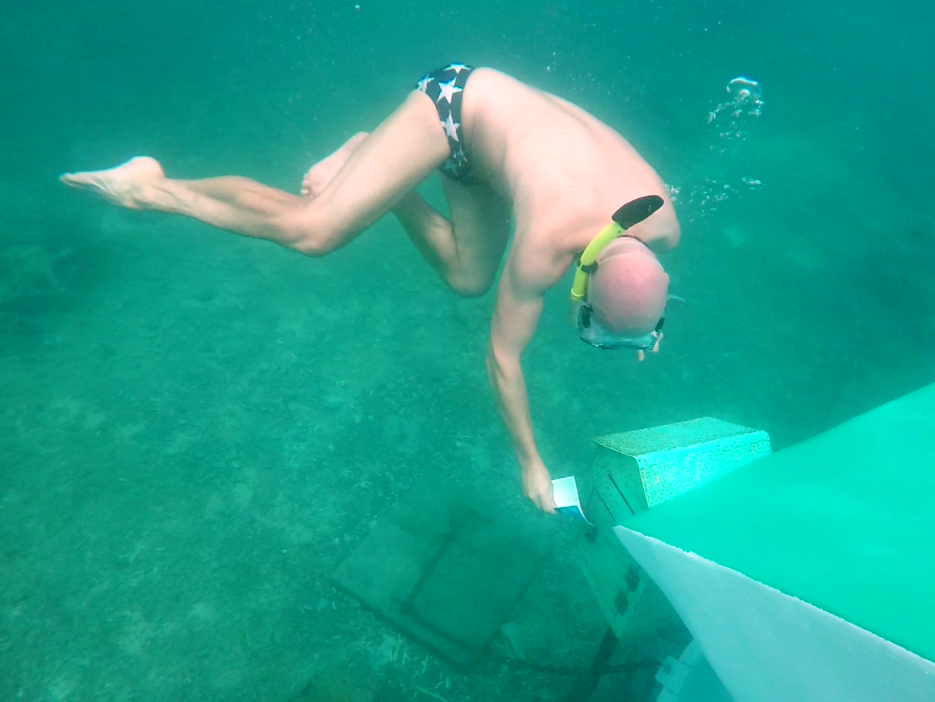
Posting a postcard in the world's only underwater post office. The mission was made possible thanks to a GoPro and hired snorkel gear. Let's see if it ever makes it to its destination. Update: it did.
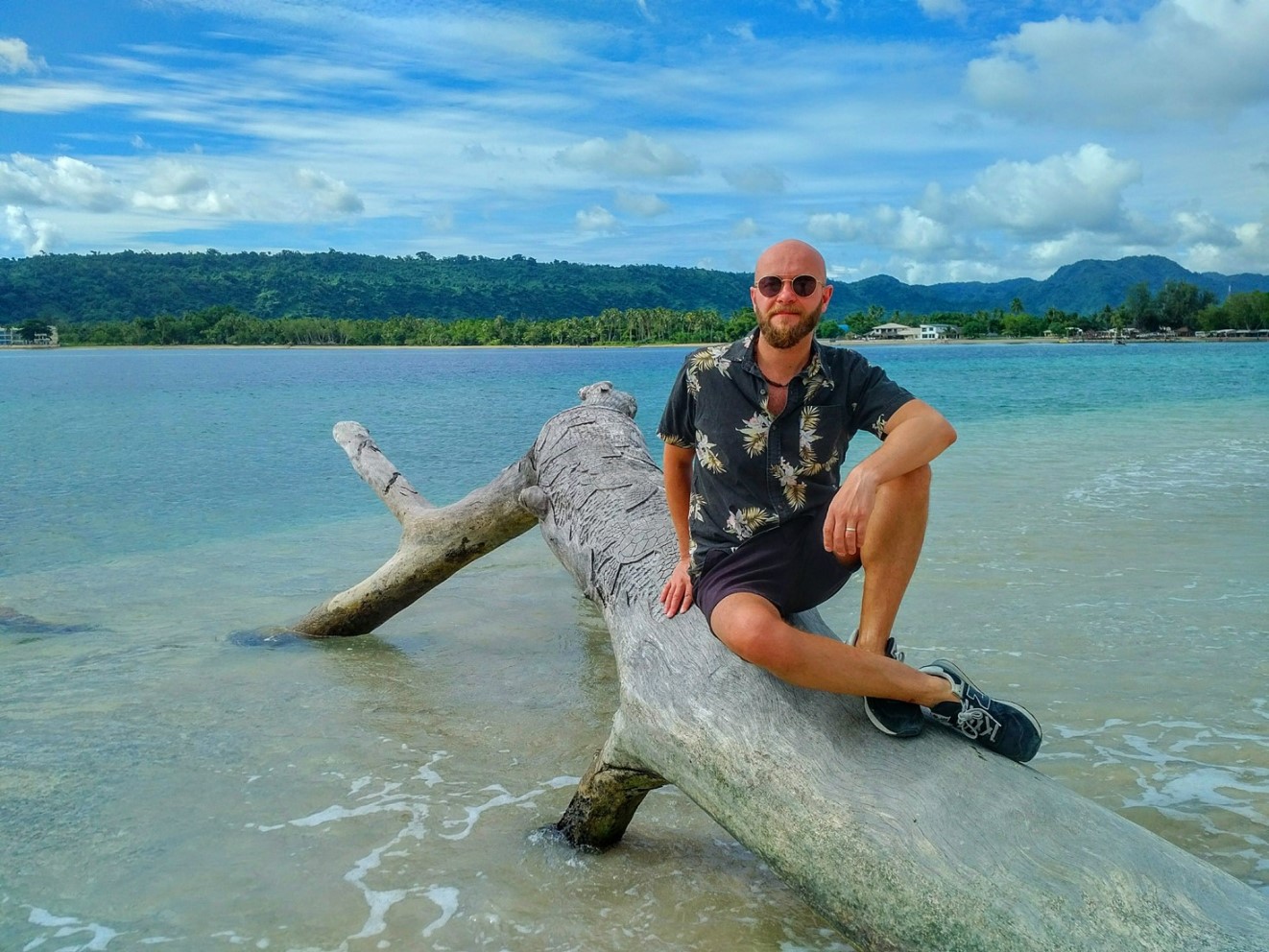
Hideaway Island. As usual, I didn't make it off a South Pacific beach without injury. Watch out - sea urchins about.

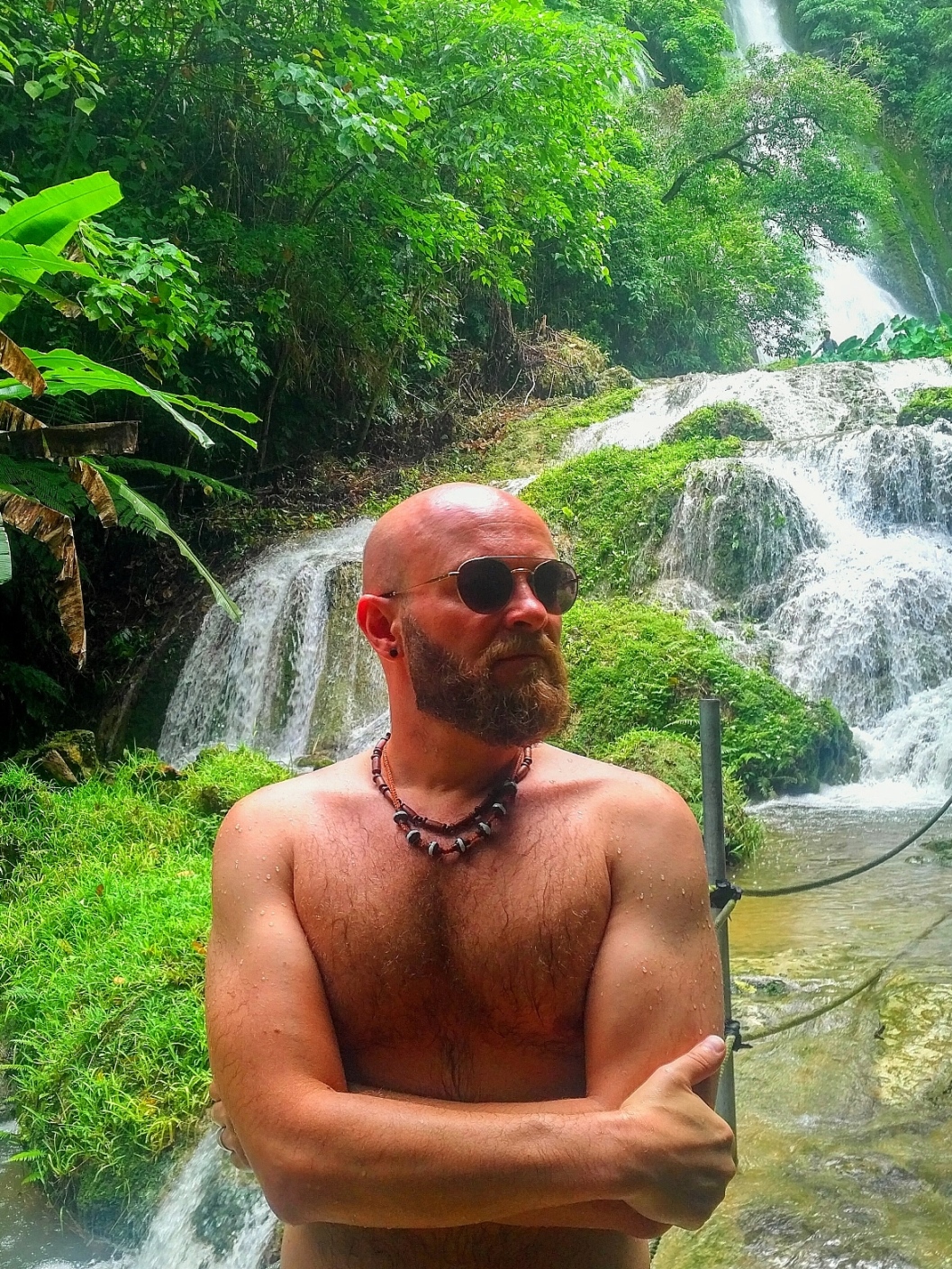
Swimming in the incredible Mele Cascades, one of Efate's natural wonders.
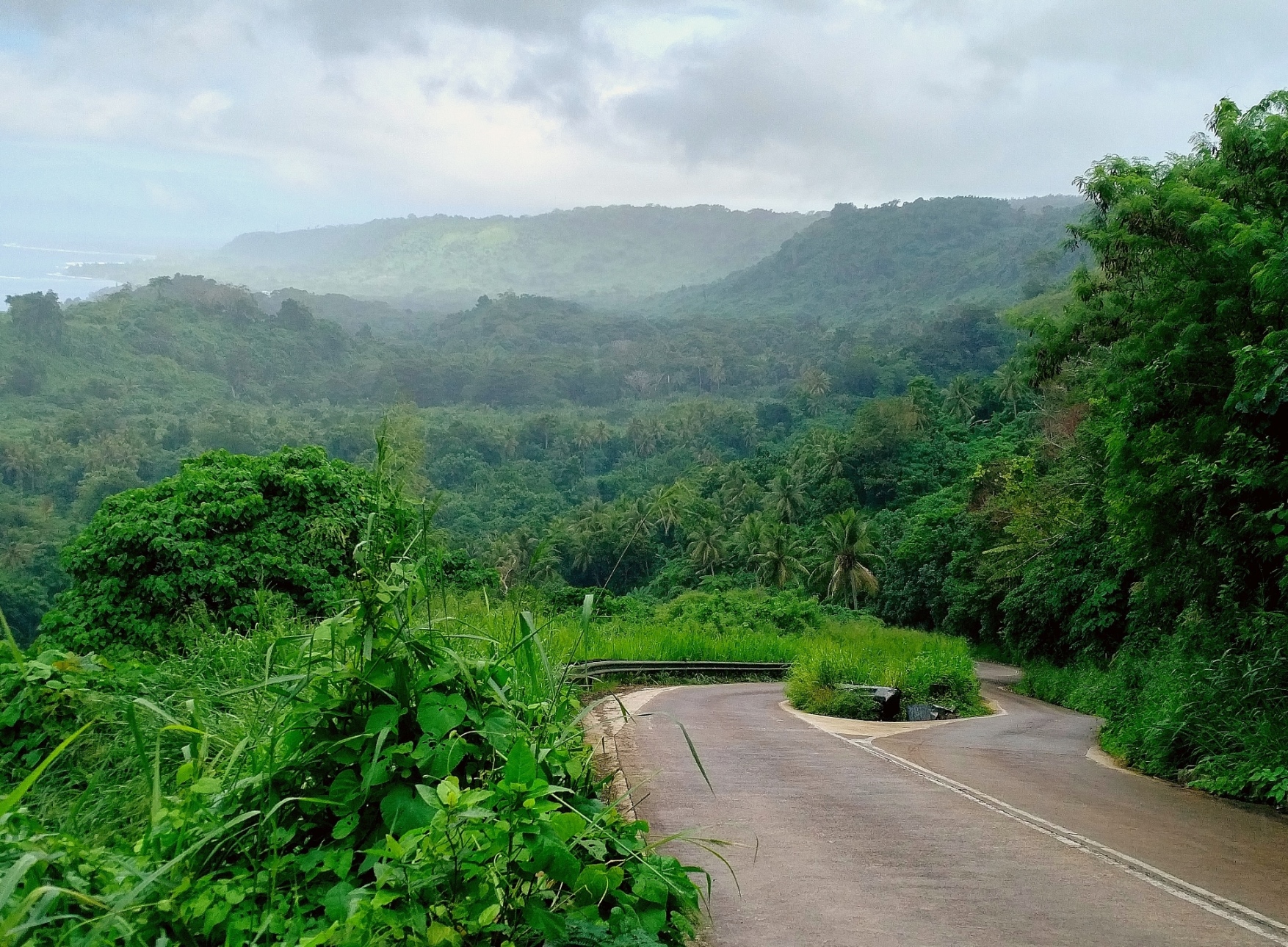
Efate road trip: we hired a car and zoomed around the island just so we could pull over and sample Efate's sights well and truly off the tourist trail and, oh my, Vanuatu is a beautiful little place...
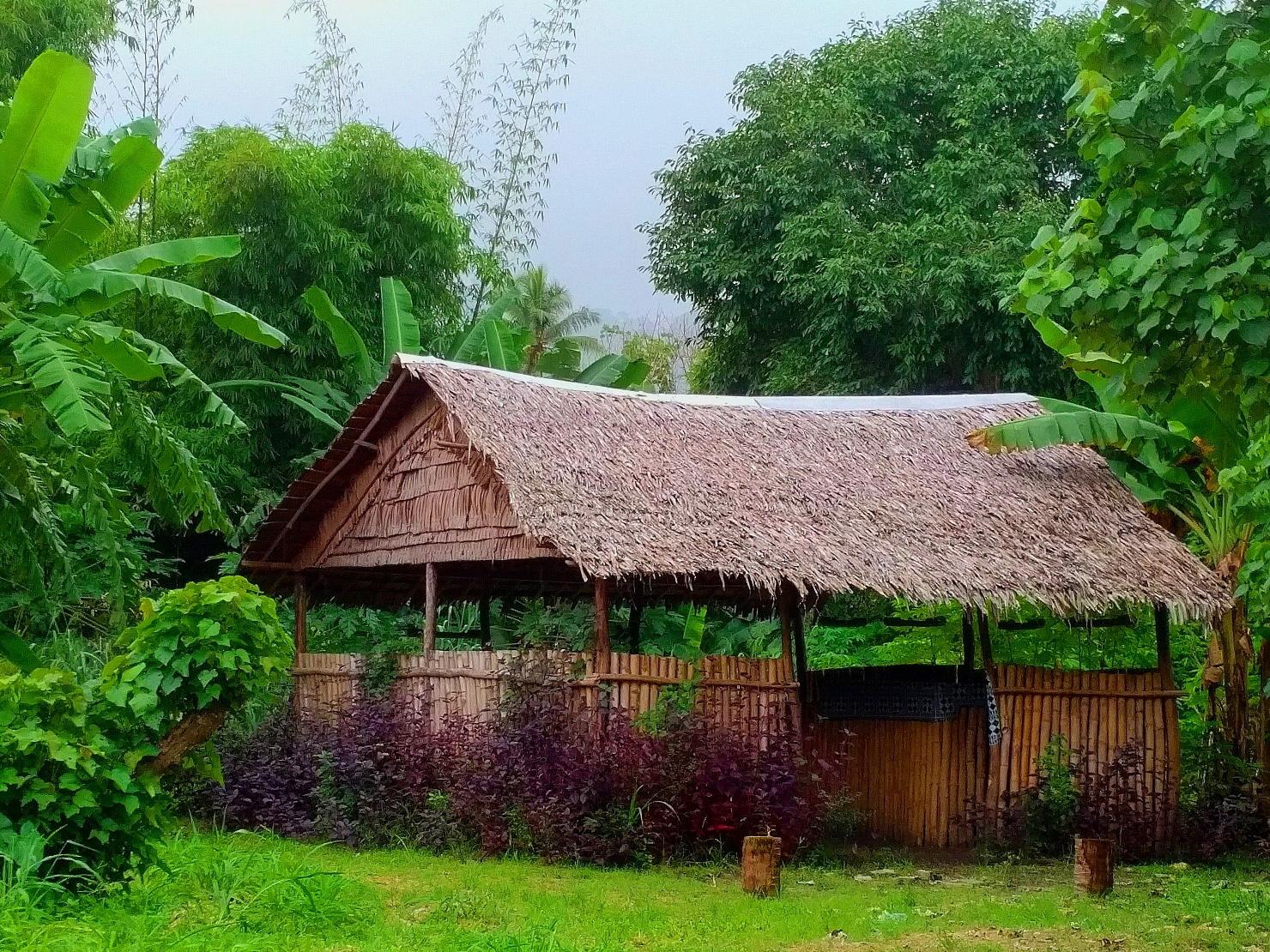
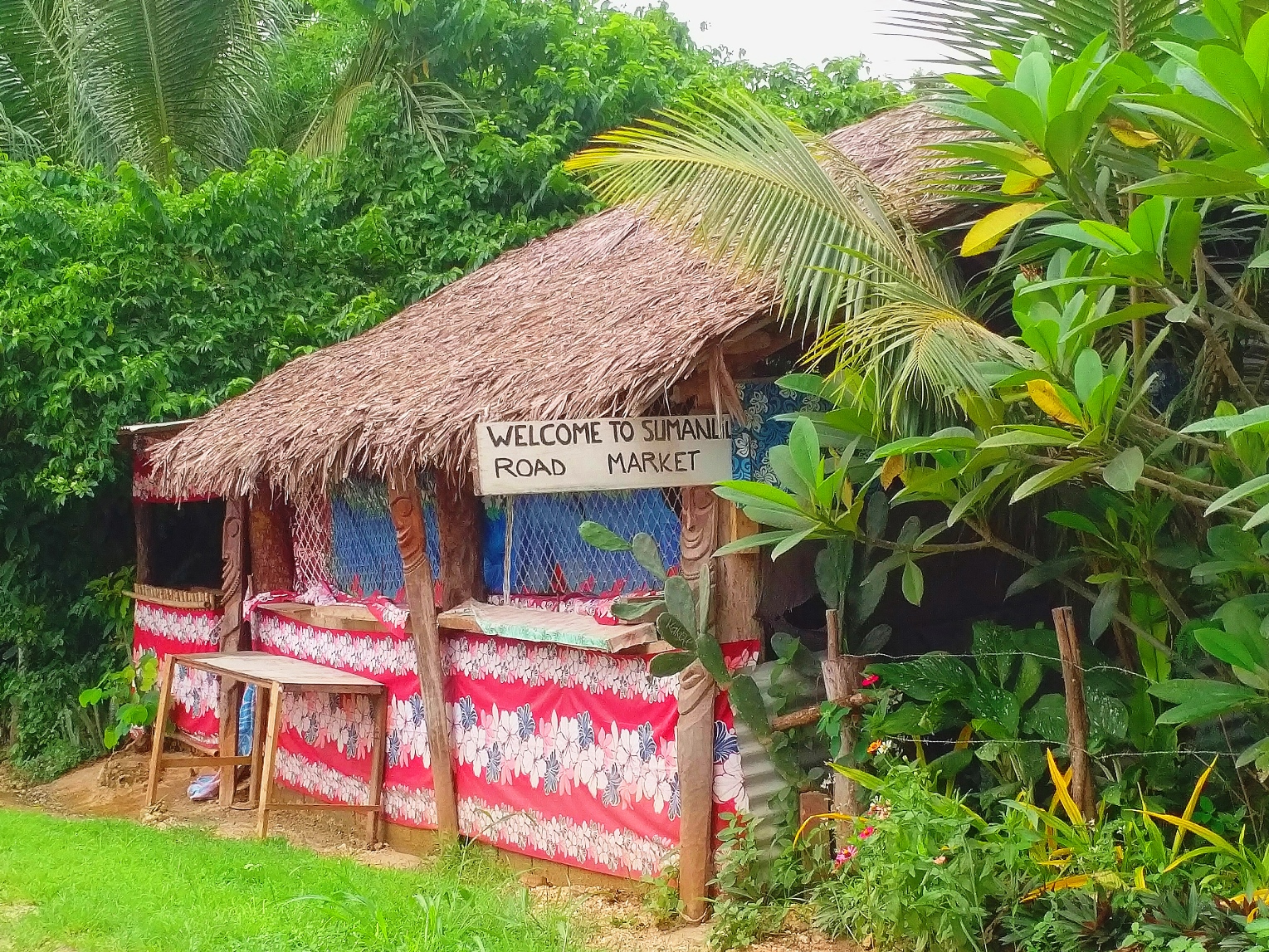
An Efate road trip was a chance to enjoy scenes of local life like this roadside stall, bursting with colour, character and sense of place: a community meeting hall and roadside market.

Palm leaves foreground a dramatic vista at Port Havannah with the island of Moso on the horizon.
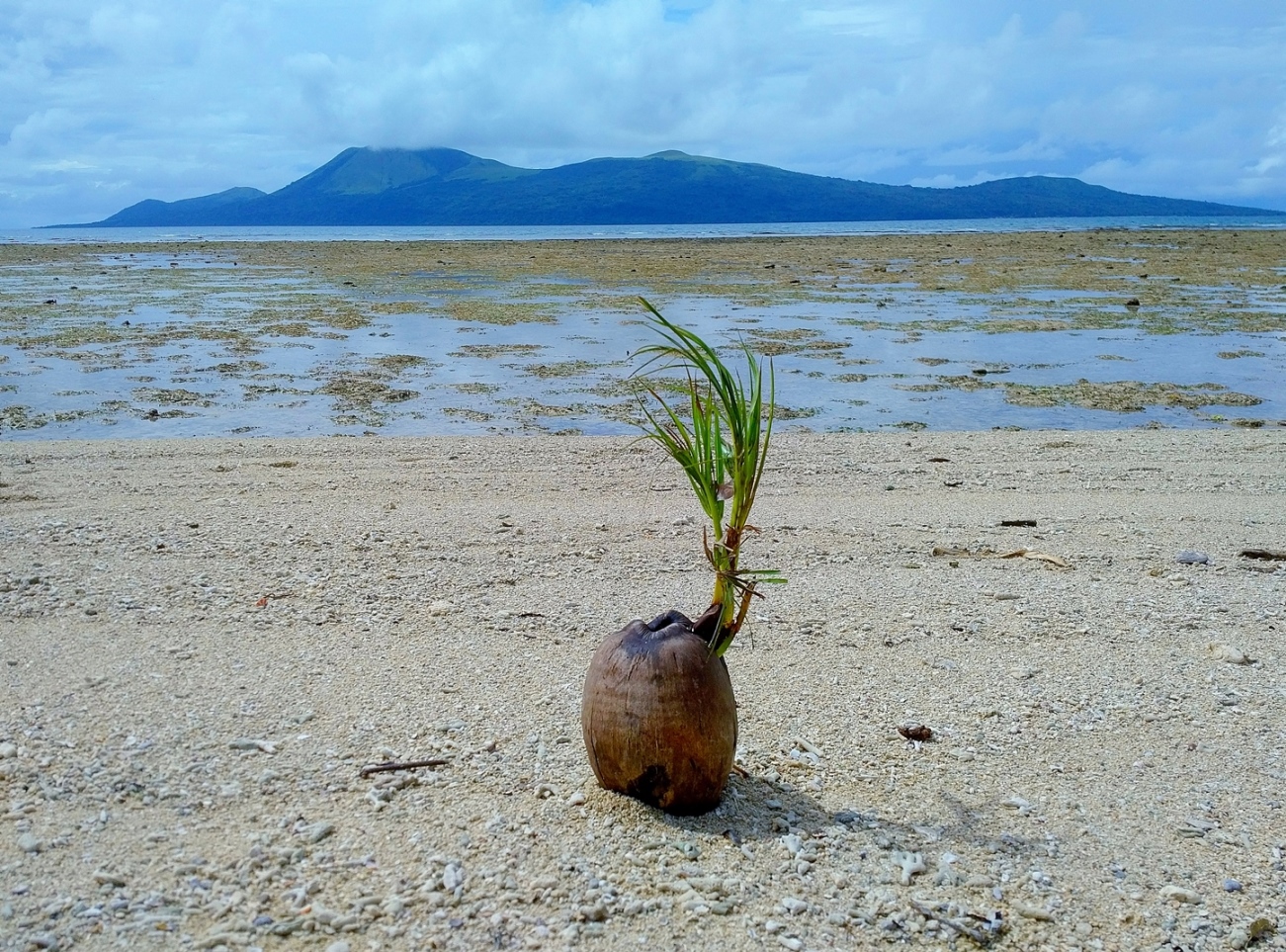
A solitary coconut sprouts at Siviri Village, northern Efate. The purple peaks of Nguna loom on the horizon.
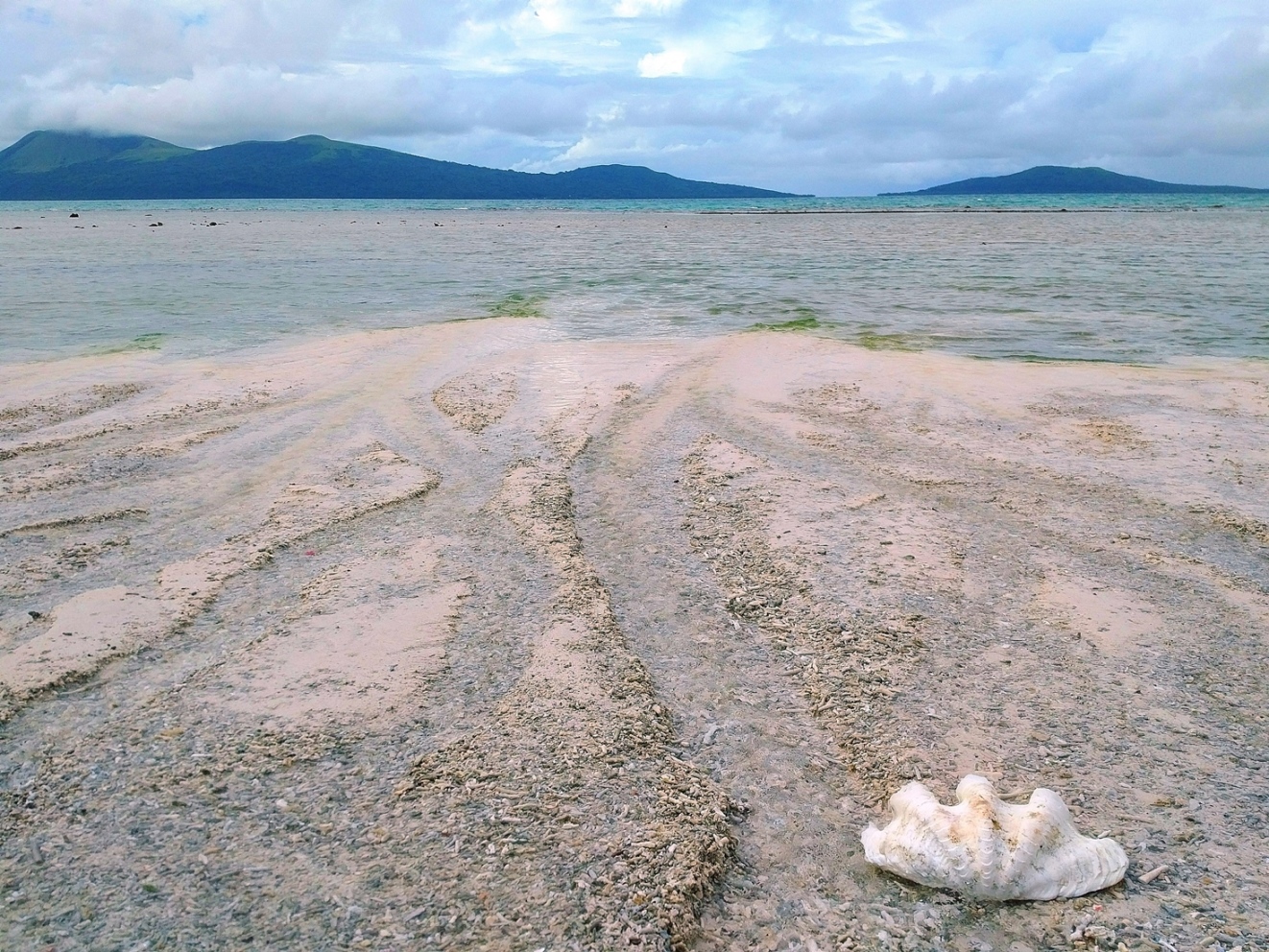
A vista out towards the peaks of Nguna and Pele dressed by a single white shell at Undine Bay.
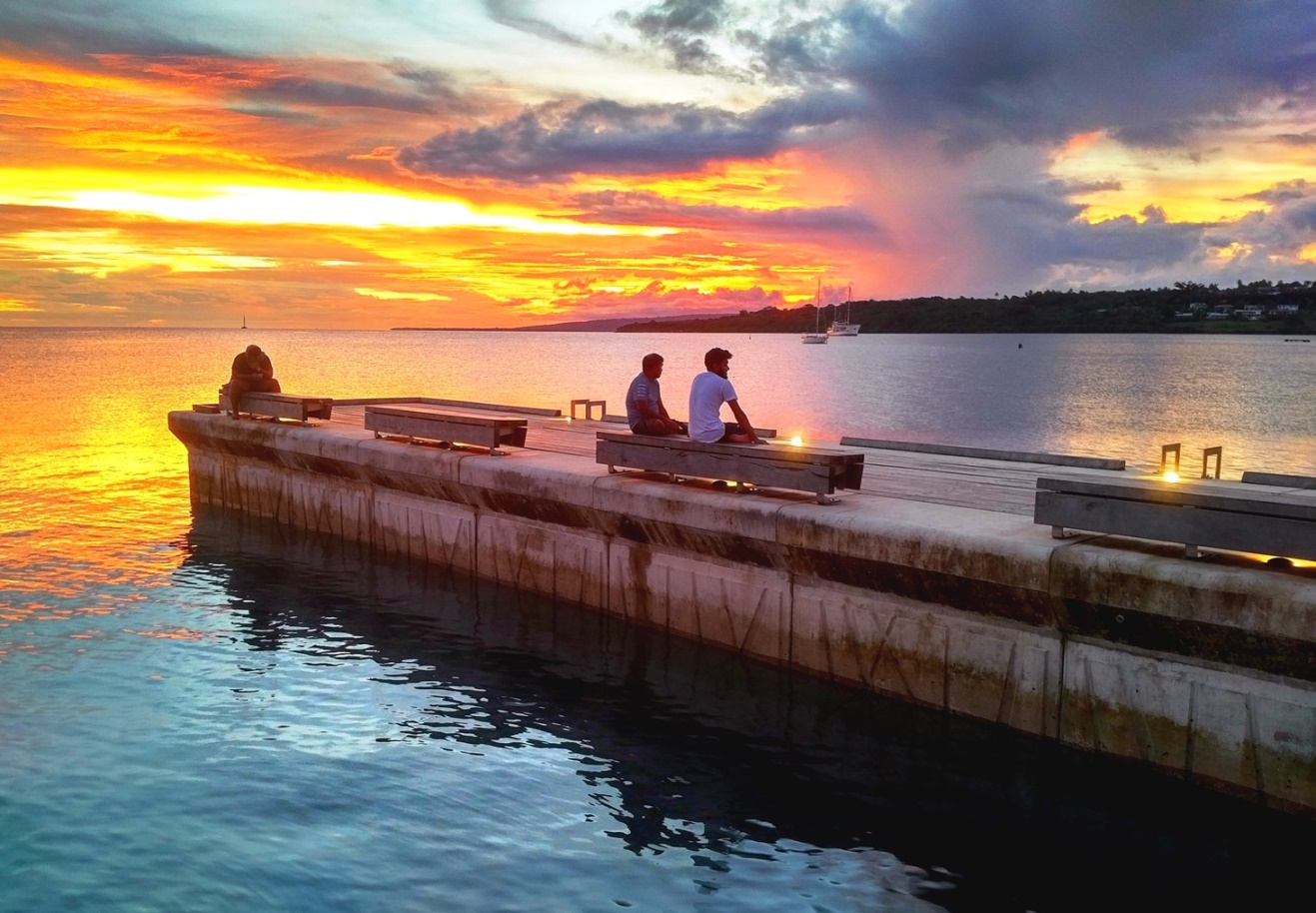
As if to farewell us on our final night, Port Vila, full of warm friendly people saying hello or waving at us wherever we've been on Efate, fittingly rewards us once more with an awesome sunset.
travel tips, links & resources
- Despite the obvious poverty of these islands, you'd be a fool to think this is a bargain destination. This is an especially expensive place to be a foreigner - and it's the kind of place where you get what you pay for. There are no bargains to be had and expect to pay for everything. Costs can be exorbitant. Start saving now.
- The weather is changeable meaning the sky will go from blue to grey within minutes - and back again. It's advisable to bring an umbrella and waterproof coat for the on-off-on downpours characteristic of this part of the world.
- Mosquitoes are a nuisance here and, although Malaria isn't a great threat, Dengue Fever is. In fact it is endemic on these islands. Spray 30% DEET liberally on limbs and bring a mozzie net if you're staying in accommodation at the cheaper end of town. I was bitten a dozen times and mostly on my first day when my guard was down and I hadn't yet switched on to my 'travel safety mode'.
- If you have the luxury, try to choose a time to visit Vanuatu outside of the Australian school holidays if you want to avoid the family tourism market spoiling paradise. It might also mean your flight to and from Vanuatu isn't made hellish by screaming babies on board.
- Travel around Port Vila is easy, quick, authentic and fun. Just look out for minibuses with a 'B' on the number plate. There are no fixed routes so just flag one down, tell them your destination and get on. Not only do you get to rub up alongside normal ni-Vanuatus going about their daily business, it is also cheap. Expect to pay a flat fare of 150Vt for trips inside of Port Vila and 200-300Vt for trips elsewhere. Some drivers will try to charge you more - just say no and start to walk. They know, as do you, that there'll be another bus along in ten seconds and so will immediately slash the fare.
- If you plan to go snorkelling and, let's face it, why wouldn't you, then it's wise to pack plasters and iodine for the almost inevitable coral cuts or sea urchin encounters. Better still, bring reef shoes.
- Invest in a GoPro: much of what you will probably get up to in Vanuatu involves being on or under water. If you have been thinking of buying one, and are going to Vanuatu, now's your chance to take the purchase plunge.
- Tanna Coffee is ubiquitous on the islands and is the coffee of choice in Vanuatu, grown, as it is, on the mountainside of a volcano. Look out for it to make sure you have a chance to taste one of Vanuatu's key brands - and in doing so support the local economy. I picked up a bag from the supermarket to take back to Australia with me.
- Take some water purification tablets with you. Although water is said to be safe to drink - certainly on the main island of Efate - I chose not to take the risk and boiled our drinking water before dropping a tablet in it too.
- It's worth taking some all-round travel antibiotics like Ciproflaxin. Vanuatu is renowned for giving people upset stomachs - no matter how cautious you think you're being.
- Driving on Efate requires caution: pot holes are many and rumours abound that bus drivers intentionally cause crashes with hire car drivers (all hire car number plates are marked with a green "H" for "Hire" and are therefore easily identifiable by other drivers) as a quick route to getting a new bus. Our hire car company, Europecar, advised us to keep well back from public buses.
you may also like
